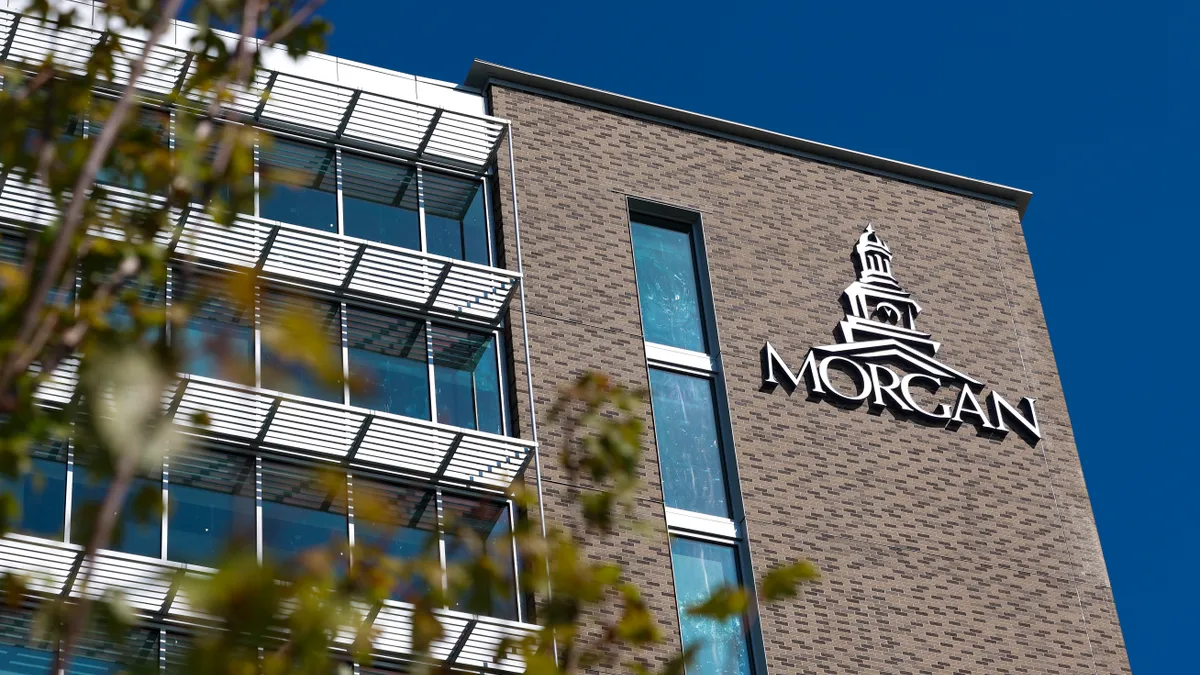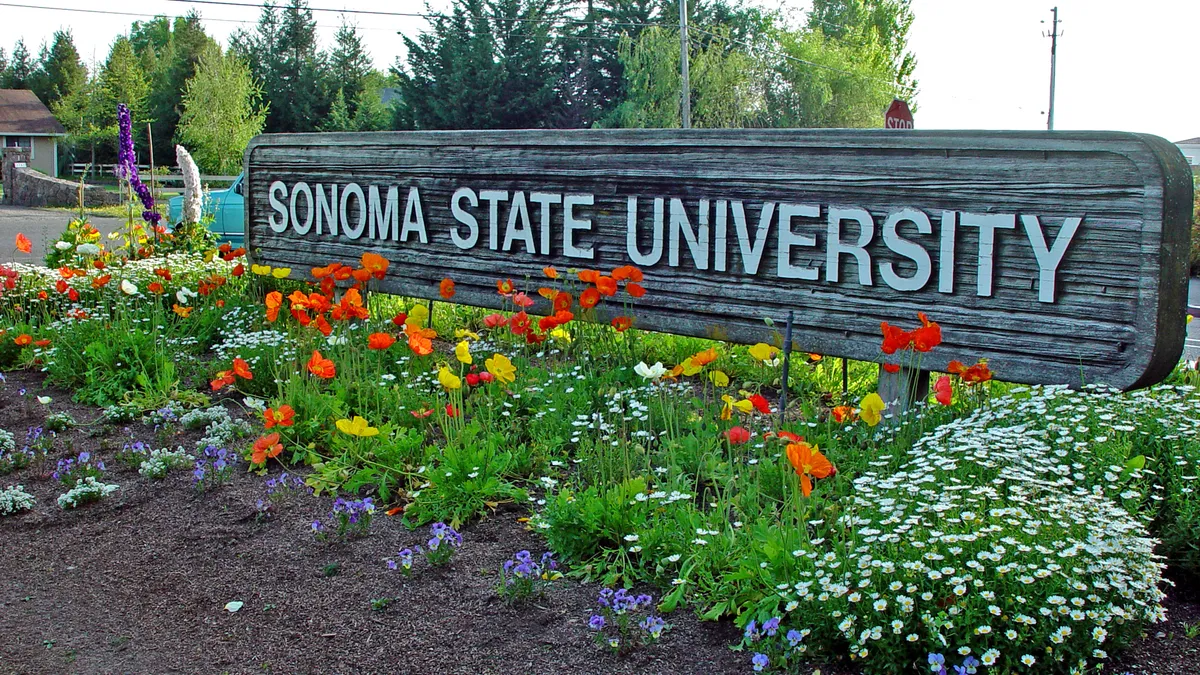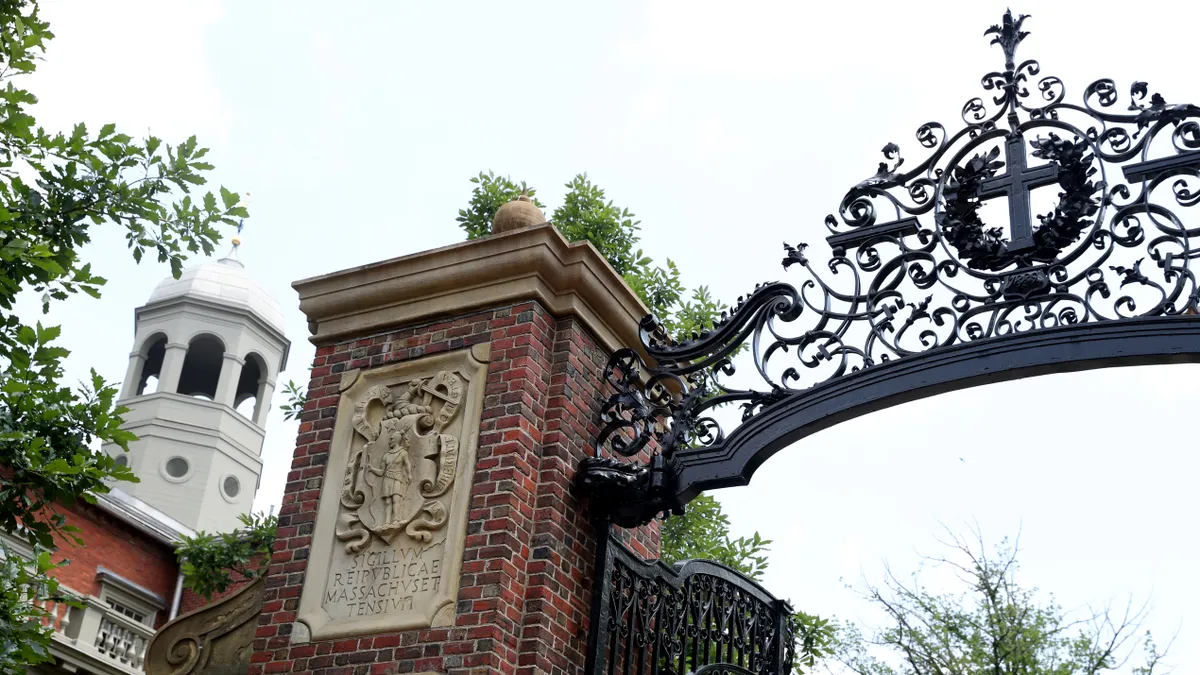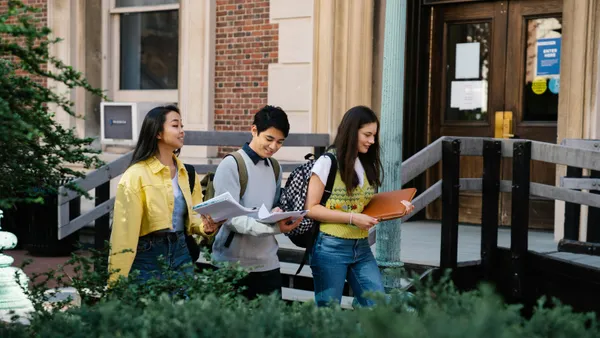Interest in attending Morgan State University, a historically Black college in Baltimore, has reached historic highs over the past few years. Since 2018, the public university saw its enrollment surge 27%, with 9,808 students attending the institution this past fall.
The university has set its sights on reaching 10,000 students by 2030, said Khala Granville, Morgan State’s director of undergraduate admission and recruitment.
Granville credited the university’s growth to its recent move to the Common Application, which houses a single online form used to apply to over 1,000 member institutions. She also pointed to the university’s aggressive student retention policies and being a midsized institution near Washington, D.C. Many of Morgan State’s new students hail from out of state, she noted.
But other HBCUs are seeing similar growth, bucking the enrollment decreases experienced at colleges and universities throughout the country in recent years.
HBCUs nationwide saw enrollment growth in fall 2021 and fall 2022 — even as student headcounts sank across the country, according to data from the National Student Clearinghouse Research Center. Overall, enrollment dipped at HBCUs in fall 2023, though the research center’s executive director noted that fewer of them provided data in time to be reflected in the final count.
Among the institutions that have seen enrollment surge is the nation’s largest HBCU, North Carolina A&T State University. Its enrollment reached 13,883 students in fall 2023, an increase of nearly 3% compared to the previous academic year. Others include Howard University, Delaware State University, North Carolina Central University, Wilberforce University and the University of Maryland Eastern Shore.
HBCU leaders seeing these headcount increases credit several reasons for them.
Many point to internal policies and practices — such as new retention and recruitment efforts and academic support for incoming students — for their recent success. Some HBCU leaders said new sources of philanthropic and government funding have fostered that growth. But, according to Granville, the enrollment growth at Morgan State — and many HBCUs in general — has also been driven by the political climate.
Students witnessed racial disparities in health outcomes during the coronavirus pandemic and saw protests erupt over police brutality following the deaths of George Floyd and Breonna Taylor.
Now, students are navigating how colleges will assess their applications following the Supreme Court’s ruling last year banning race-conscious admissions policies, said Granville.
Due to these developments, students are seeking institutions that will allow them to be their full selves from a racial and ethnic standpoint — something HBCUs have historically provided to the academic benefit of their students, said Granville.
“Students are wanting to find spaces where they are seen, and welcomed and affirmed,” said Granville. “That contributes to their ability to succeed because they are making those big connections with faculty, with staff who truly are invested in their success.”
Racial tensions spark enrollment growth
In general, the enrollment increase has been driven by historically Black colleges’ ability to take in students who are “diverse in their academic backgrounds, worldviews, and college aspirations,” Nadrea Njoku, assistant vice president of UNCF’s Frederick D. Patterson Research Institute, said in an email. The institute studies how to improve educational opportunities for African Americans.
“When students search for post-secondary institutions that fit their needs, HBCUs stand out as welcoming places,” said Njoku.
Interest surrounding HBCUs swelled in 2020, when protests swelled following the police killings of Floyd and Taylor. Those events elevated racial tensions in the U.S. and placed a spotlight on the importance of HBCUs, which have historically served as an important catalyst of the Black middle class, said Harry Williams, president and CEO of Thurgood Marshall College Fund.
Since then, tens of millions of dollars in new funding has poured into historically Black colleges through the HBCU Transformation Project, a project launched in 2022 that aims to help institutions grow enrollments and improve graduation rates. The transformation project is led by a group of organizations that support HBCUs, including UNCF and the Thurgood Marshall College Fund.
Institutions also received an influx of pandemic relief money from the federal government and philanthropic donations from celebrities, companies, and billionaire philanthropists, including author MacKenzie Scott and former Netflix CEO Reed Hastings and his wife, producer Patty Quillin.
“The excitement for HBCUs right now is at an all-time high and the interest is at an all-time high,” Williams said.
Strategic decisions behind growth
Not every institution credits their enrollment growth to a racial awakening or tensions.
At 617 students, Wilberforce University’s fall 2023 enrollment grew almost 28% over the previous academic year and nearly 13% higher than pre-pandemic levels, according to data provided by the college.
But Wilberforce's president Vann Newkirk credits the university’s enrollment growth to its strong brand — it’s the oldest private HBCU in the nation that is owned and operated by African Americans.
The university uses its history and general location to market itself to students from the Midwest, the Mid-Atlantic and foreign countries, said Newkirk. It’s the only private HBCU in Ohio and one of just three private HBCUs located in non-Confederate states.
The university has also taken an “aggressive approach” to retaining students in recent years, using advanced data analytics and “more intrusive advising and counseling,” said Newkirk. Through its approach, first-year retention increased from under 60% to 73% in less than two years, he said. Officials expect further retention increases next fall.
The University of Maryland Eastern Shore saw its overall enrollment grow 19% between the 2021 and 2023 fall terms, reaching 2,840 students. With that increase, the public university has nearly returned to its pre-pandemic enrollment figures.
University leaders attribute that growth to the administration’s strategic plans and on-the-ground decisionmaking. The university, for instance, launched programs aimed at enticing both local and national prospective students, said Darryl Isom, the university’s director of admissions and recruitment.
The university also attempted to remove barriers to enrollment, got faculty more involved with ensuring students are on track, and is using alumni and current students to assist with recruitment efforts, said Latoya Jenkins, the university’s vice president of enrollment management and student experience.
“We definitely have benefited from an enrollment increase,” said Jenkins. “But it has been a culmination of the years' work.”
“The excitement for HBCUs right now is at an all-time high."

Harry Williams
President and CEO, Thurgood Marshall College Fund
Still, being an HBCU has helped. Isom pointed to several high-profile graduates of HBCUs in recent years, including Vice President Kamala Harris, who attended Howard University.
“She’s been really able to champion the benefit of HBCUs to make students understand that by coming to an HBCU, they’re not compromising anything, they will receive a quality education that will get them to wherever they would like to go,” Isom said.
HBCU officials also say their institutions are positioned to meet the needs of students coming from underserved communities.
The University of Maryland Eastern Shore, for instance, regularly serves students struggling with math and reading. The university has leaned into its summer learning program to help incoming students get ready for college, Jenkins said.
“Because we are poised to listen to our students and to often help the underserved and marginalized communities, we could anticipate the needs of our students and our student demographics and to be able to answer those needs,” Jenkins said.
Impact of Supreme Court’s ruling
The U.S. Supreme Court’s 2023 decision to effectively eliminate race-conscious admissions may lead to more interest among Black students in attending HBCUs, Williams said. Some HBCUs — including Morehouse College, Howard University and Clark Atlanta University — have been reportedly preparing for a surge in applicants due to fallout of the decision.
The ruling could cause Black students to turn to HBCUs if their acceptance rates at predominantly White institutions decrease or if they believe they would face racial discrimination or danger on those campuses, said Njoku, with UNCF.
Williams believes African American applicants will decline at some top-ranked colleges following the Supreme Court’s decision — the same way applicants to top public institutions in California fell when the state opted to stop factoring race into its admissions decisions in 1996.
Instead, those students will opt to attend top HBCUs, Williams said.
“There’ll be some hesitation among African American students about whether to apply because the signal is that we may not be welcome here,” Williams said. “Therefore, you may want to go to a place where you’re going to want to feel welcome.”
But, the decision “was pretty narrowly tailored to focus on the elite schools, the Harvards,” Williams added. It’s still too early to tell how the decision will ultimately impact applications, he added.
Granville, at Morgan State, said she doesn’t buy the assumption that HBCUs will receive an outpouring of applicants in the wake of the Supreme Court decision. Students are choosing large public institutions and selective universities because they value attending them, regardless of their background, she said.
As an African American woman, Granville said she wouldn’t forgo applying to Harvard University because the admissions office couldn’t consider her race.
“I want to go to Harvard because I want to go to Harvard,” said Granville. “If a student has a particular aspiration for themselves, they’re going to continue to move forward in that because that is essentially what’s driving their interests.”
Still, students are noticing the impact and benefits that HBCUs bring to their communities.
They are “realizing you can get the same quality of education, the same level opportunities by going to one of our institutions versus going to so-called Ivy League schools,” Williams said.
The need for more
Some HBCUs have had to right-size their campuses to adjust to their newfound growth, with new courses and more housing, employees and services.
Take the University of Maryland Eastern Shore, where administrators believe they’ve created the foundation for continued enrollment increases, Isom said.
But that growth has created a need to expand its housing. Morgan State, Wilberforce and Maryland Eastern Shore are all either planning or working on projects to renovate or build new residential facilities.
Wilberforce also increased its faculty size since fall 2022 and developed a comprehensive plan that calls for more retail space and athletic expansions, said Newkirk. Morgan State has also added faculty, as well as class sessions, dining spaces and advising resources, said Granville.
“Everything has to be scaled,” said Granville.
But that work needs to be funded — a necessity that could prove challenging, considering HBCUs have still been historically underfunded. Despite recent financial windfalls, the Biden administration recently reported that 16 states have collectively underfunded their land-grant HBCUs by over $12 billion over the past three decades.
Some HBCUs have responded to the influx of students by leaning on UNCF for help with fundraising and advocating for more financial resources that can help them expand, said Njoku. The Thurgood Marshall College Fund has also helped in those fundraising efforts, Williams said.
“We anticipate that [the growth] will continue in a very positive way, but we’ve still got to work extremely, extremely hard to get the resources to our schools,” Williams said. “No matter how many applications that they get, students are still looking for quality facilities, quality programs, quality outcomes.”





















